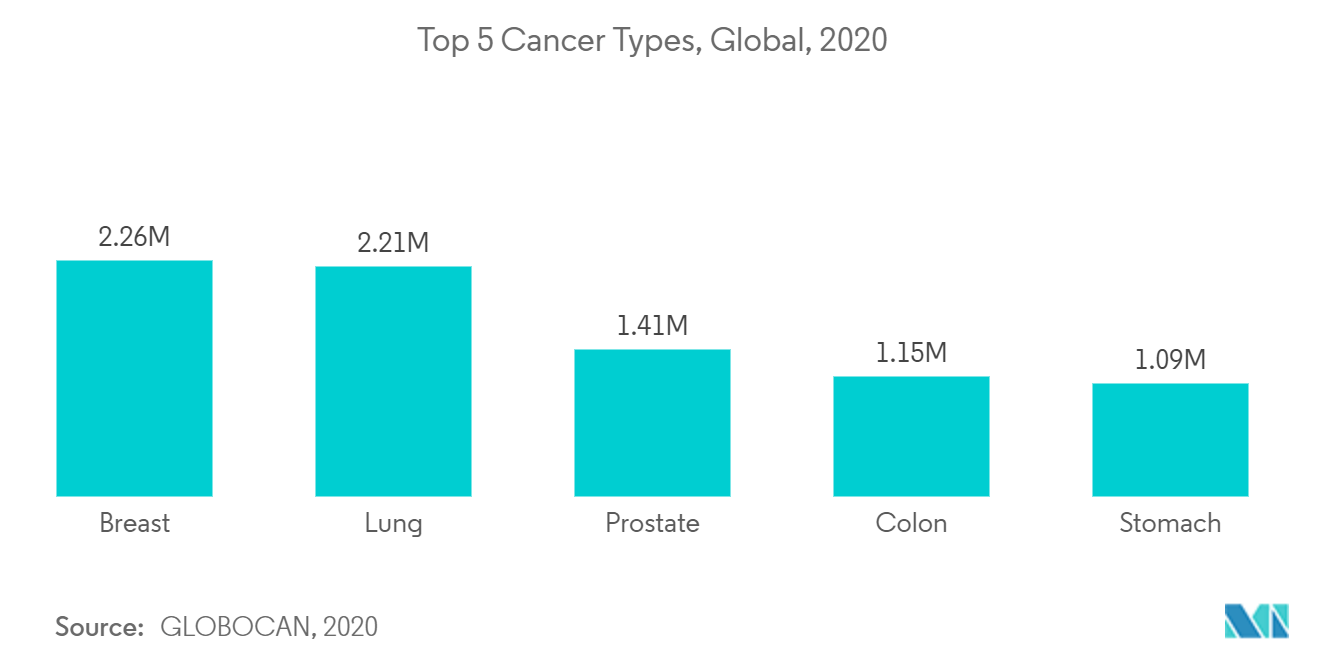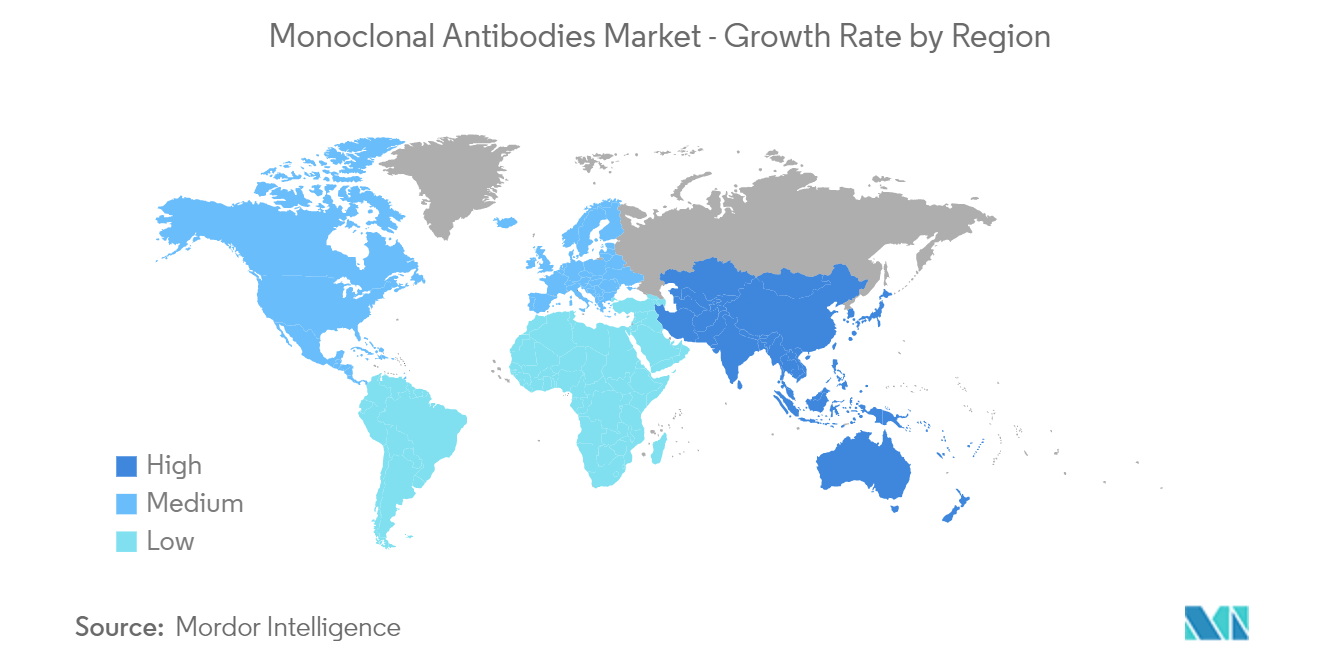Market Trends of Global Monoclonal Antibodies Industry
This section covers the major market trends shaping the Monoclonal Antibodies Market according to our research experts:
Cancer Monoclonal Antibodies is Estimated to Occupy a Significant Share in the Market over the Forecast Period
Monoclonal antibodies are highly specific to cancer cells, as they bind to the proteins on their surface and stimulate an immune response. Due to the rising prevalence of cancer cases, globally, in the global monoclonal antibodies market, cancer monoclonal antibodies may occupy a major market share. The number of people suffering from cancer is increasing across the globe. For instance, according to the February 2022 update by the World Health Organization (WHO), cancer accounted for approximately 10 million deaths, worldwide, in 2020. The most common in 2020 (in terms of new cases of cancer) were: breast (2.26 million cases); lung (2.21 million cases); colon and rectum (1.93 million cases); prostate (1.41 million cases); skin (non-melanoma) (1.20 million cases); and stomach (1.09 million cases).
Additionally, the global pharmaceutical companies are investing heavily in the R&D of cancer biologics drugs (monoclonal antibodies), because they are very efficient and non-toxic in the diagnostics and treatment of different types of cancer as compared to chemotherapy and other cancer treatment methods. Moreover, getting approvals for many new cancer monoclonal antibodies by the respective authorities is more efficient and easy. For instance, In January 2021, the antibody-drug conjugate trastuzumab deruxtecan has been granted conditional approval in the European Union for use as a single agent in the treatment of adult patients with unresectable or metastatic HER2-positive breast cancer. These advancements may fuel the growth of the cancer monoclonal antibodies segment.

North America is Expected to Dominate the Global Monoclonal Antibodies Market during the Forecast Period
North America is segmented into three countries - the United States, Canada, and Mexico. North America may dominate in the market share of global monoclonal antibodies because of the presence of a standard nationwide healthcare system, especially in the United States and Canada, and huge funding by governments for the R&D of new biological therapies, especially for cancer and new infectious diseases, rising geriatric population and diseases associated with them, and presence of key market players in the region during the forecast period.
Some of the key market players are headquartered in the United States, actively advancing the technique, launching new products, and forming strategic partnerships to have an edge in the monoclonal antibodies market. Several companies and other related organizations are also engaged in the development of monoclonal antibodies and, over the year, had few breakthroughs. For instance, in March 2022, GlaxoSmithKline plc and Vir Biotechnology, Inc. announced that the United States Food and Drug Administration has amended the Emergency Use Authorization (EUA) Fact Sheet for sotrovimab, an investigational monoclonal antibody. Additionally, the increasing cases of chronic diseases, such as cancer, may boost the growth of the market in the region. As per the GLOBOCAN 2020 report, 2,281,658 new cancer cases were diagnosed and 612,390 deaths due to cancer in the United States alone. The cancer cases in Canada and Mexico were 274,364 and 195,499, respectively. These factors are expected to drive the growth of the studied market over the forecast period.

